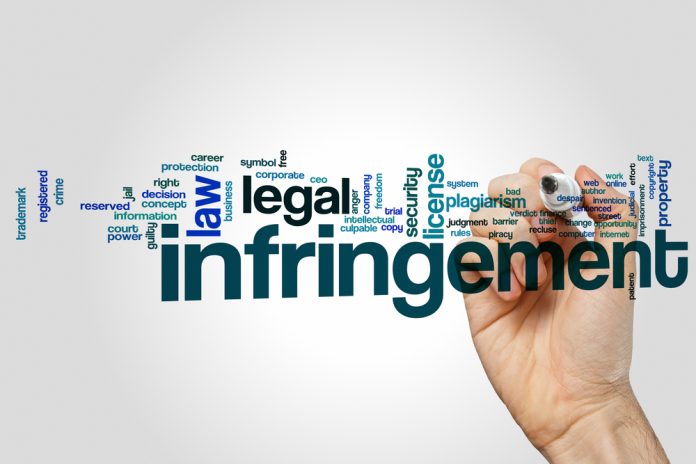This article has been written by Saloni Bhatt. This article deals with Section 12 of the Trade Marks Act, 1999 which talks about honest and concurrent use of a Trade Mark. A detailed explanation of the Section has been provided with reference to relevant case laws and its essentials.
Table of Contents
Introduction
The fundamental components of brand identification are trade marks. Trade mark, as defined under Section 2(zb) of the Trade Marks Act, 1999, states that a trade mark is a mark capable of being represented graphically, which helps in distinguishing goods and services from those of others. It may include shapes, combinations of colours, alphabets, etc. The Trade Marks Act, 1999 (hereinafter referred to as the Act of 1999) serves as a legal framework for safeguarding the rights of trade mark owners as well as providing certain powers to them. The Act of 1999 outlines a series of sections that govern various aspects of a trade mark, including the process of registration, rights and ownership, authorization and licence, while at the same time setting up some limitations as well. By navigating through the Act of 1999, it helps us understand the rights and obligations of a trade mark owner. It also lays down the necessary sections relating to infringement and the rights of a trade mark owner.
During ancient times, traders and merchants used watermarks on paper or potter’s ceramic marks as trade marks in order to set their goods apart from those of their competitors. With the rise of the industrial revolution, wherein mass production was on the rise, counterfeiting and consumer confusion became common, which fueled the need for formal trade mark protection. During the 20th century, the trade mark gained industrial recognition with the establishment of the Paris Convention for Industrial Properties in 1883, which focused on standardised trade mark registration processes across member countries. As world economies diversified, the concept of trade mark was extended beyond the physical goods and also included services, slogans, symbols, etc. So that being said, trade marks have a long, enriching journey dating back to a period when there was no legal structure in place to protect the rights of trade mark owners.
Honest concurrent use of a trade mark
The concept of honest concurrent use is enshrined under Section 12 of the Act of 1999. Honest concurrent use acts as a legal doctrine under which two or more parties are able to use similar or identical trade marks for their goods and services, keeping in mind that certain conditions are met. The main objective of this section is to help the applicant of a trade mark prove that he has been using the said trade mark in good faith and that he did not have any previous knowledge of the earlier registered similar trade mark in respect of his goods and services.
It is important for the applicant to prove that he has been a bonafide user of the known trade mark. There have been certain landmark judicial pronouncements that help us give a broader view on the concept of Section 12 of the Act of 1999. As we already know, an already registered trade mark is a ground for refusal under Section 11 of the Act. However, Section 12 helps us prevent confusion among consumers as to the ownership of the goods and services. According to the Act of 1999, Section 12 states that in the case of honest concurrent use or of any other special circumstances, which in the opinion of the registrar fits the criteria, may permit the registration by more than one proprietor of the trade marks that are similar or identical in respect of the same or similar goods or services, subject to any limitations that the Registrar deems fit to impose.
Essentials of Section 12 of Trade Marks Act, 1999
Section 12 of the Act of 1999 talks about the concept of honest concurrent use of trade marks. It can be said that this provision provides an exception to the general rule that identical or similar trade marks cannot be registered for the similar goods or services. The exceptions are as follows:

Good faith use: For usage of Section 12, both the parties must prove that they have used the trademark in good faith without any intention to deceive;
Distinct geographic markets: Operating the trade marks in different geographical regions can support the claim of honest concurrent use, such that in the case of Goenka Institute of Education & Research vs. Anjani Kumar Goenka & Anr. (2009).
Concurrent use: Under Section 12, both parties must be able to prove that they have been using the same trade mark for a long period of time that has not been in the knowledge of other’s use;
Confusion among consumers: While using the same trade marks, the parties need to make sure that there is no confusion among the consumers regarding their own goods and services;
Difference in the use of goods and services: Parties using the same trade mark should also make sure that there is a significant difference between their goods, which can help strengthen their stance to prove honest concurrent use of the said trade mark.
Special circumstances under Section 12 of the Act
Under Section 12, as honest concurrent use is already mentioned, the provision also provides what can be other special circumstances. It can be said that the term ‘other special circumstances’ provides the Registrar flexibility to permit certain registrations of identical or similar trade marks by one or more proprietors under specific circumstances. Some potential scenarios can be as follows:
- Licensing agreements: In certain cases, where the licence has been granted by the proprietor for use of the said trade mark and there is a licensing agreement in place, the Registrar might exercise discretion.
- Geographical limitation: When both parties operate in different geographical markets, the Registrar might consider a special circumstance. For example, McDonald’s is a globally recognized brand with trade marks registered in different countries; however, while the golden arches logo is widely associated with McDonald’s, it is possible that a local business in a country that does not have a strong presence of McDonald’s could use a similar logo without infringing on McDonald’s rights.
- Distinct market segments: When the same trade mark has a different consumer base, it can be considered a special circumstance. For example, the trade mark “Candy” is being used by a proprietor to sell candies for young children, whereas the same trade mark “Candy” is also being used to sell candy-coloured clothes by another proprietor, showcasing that they do have different consumer bases for honest and concurrent use.
- Mergers and acquisitions: Under special circumstances, post-merger or acquisition scenarios may be considered for unique registration.
Section 12 as a defence against trade mark infringement
Section 12 helps prevent confusion among the consumers as to the ownership or from where the goods originated. For every trade mark to get protection, it has to be registered with the Registrar of the trade mark. However, the Registrar has the power to reject the trade mark under Section 9 (absolute grounds of refusal of trade mark) and Section 11 (relative grounds of refusal of trade mark). Section 11 prevents a mark from being registered that is identical or has been previously registered. When the application for registration is denied under Section 11 of the Act, the applicant can come up with several defences.
Honest concurrent use, as mentioned under Section 12 is one such defence that the applicant can make use of to defend from getting engaged into a trade mark infringement battle. The main contention is to prove that the applicant has been using the said mark in good faith and has no knowledge or whereabouts of the trade mark being registered earlier or being used by some other proprietor as well. The burden of proof lies on the applicant to prove that the customers associate the mark with their goods or services.
Documents to prove honest concurrent use
Under Section 12, to prove that there has been honest concurrent use of the trade mark, some of the documentary evidence needed is as follows:

- If the mark has already been in use, then the term of usage of the mark needs to be proved by the applicant; and
- Advertisements of the mark and the proof of all the funds spent on advertising the mark is crucial evidence to showcase honest use of the trade mark by the applicant.
- Submitting books of accounts showing annual sales for goods and services offered under the mark is also sufficient to prove the same;
This helps the applicant to prove that the said trade mark has been associated with his goods and has a different consumer base from that of a similar trade mark owner.
Relevant case laws

Kores (India) Limited vs. Khoday Eshwarsa And Son, And Anr. (1984)
Facts of the case
In the case of Kores (India) Ltd. vs. M/s Khoday Eshwarsa and Son (1984), decided by the High Court of Bombay, herein, the petitioners, Kores (India), filed an application in respect of carbon papers, typewriting ribbons, and stencils for a trade mark consisting of a device of a typist girl at the typewriter, which was objected by the respondents under Section 9 of the Act as an identical device and the word “khoday” was already registered by the respondents.
According to Section 12(3) of the Trade and Merchandise Marks Act, 1958, the following facts were required to be taken into consideration while determining the registrability of a trade mark under such a provision:
- The genuineness of the concurrent use;
- The quantum of concurrent use of trade marks shown by the applicant having regard to the duration, area, and volume of trade and to the goods concerned;
- The probability of confusion resulting from the similarity of the applicant’s and opponent’s trade marks, as a measure of the public interest or public inconvenience;
- Whether any instances of confusion have on record been proved; and
- The relative inconvenience that may be caused to the parties concerned.
Issue raised
- Whether Kores Limited’s trade mark was deceptively similar to Khoday Eshwara Son’s registered trademark, leading to confusion among consumers?
Judgement
The High Court of Bombay decided that both trade marks used a similar device of a typist girl. The goods for which both trade marks were being used were identical and there was a likelihood of confusion among consumers due to the similarity of the trade marks and the identical nature of the goods. The overall expression of the devices was similar.
London Rubber Company Ltd. vs. Durex Products (1963)
Facts of the case
In this respective case, the respondents (Durex products) submitted an application before the Deputy Registrar of Trade Mark for registering the trade mark ‘durex’ use on the packaging of contraceptive devices manufactured and sold by them. The appellants (London Rubber Company) argued that they had been using the trade mark Durex in India since 1932, and they renewed the registration of the same in 1954 for a period of 15 years, which was ignored by the deputy Registrar of trade marks, and the trade mark Durex was registered as filed by the respondent. An appeal was filed in the Hon’ble High Court by the appellants, which was dismissed. The main contention of the appeal was that the mark durex was identical and the registration of the same had to be refused by the deputy registrar; furthermore, the requirements of Section 10(2) were not satisfied in this case.
Issue raised
- Whether London Rubber Co. Ltd. had established prior use of the trademark “Durex” in India?
- Whether the use of the identical trademark by both parties would lead to confusion among consumers?
- Whether Durex Products (Inc.) was entitled to register the trademark “Durex” in India?
Judgement
The Hon’ble Supreme Court of India held in this case that Section 10(2) of the Act of 1999 was permitted by the Registrar to register the marks identical or similar in respect to another, provided that he is of the opinion that there was honest concurrent use of the mark by more than one proprietor or because such special circumstances existed. It was also held in this case that every small trader is entitled to protect his trade mark in case there is honest concurrent use as well.
Goenka Institute of Education and Research vs. Anjani Kumar Goenka (2009)
Facts of the case
In this respective case, decided by Delhi High Court on 29th May, both the applicant (Goenka Institute of Education and Research) and respondent (Anjani Kumar Goenka) had “Goenka” as a part of their trade marks, one being Goenka Public School and the other being G.D. Goenka Public School. Both parties were using the same trade mark “goenka” at the same point in time; one institution was based in Delhi while the other operated in Rajasthan. The appellant could not have known the usage of the same trade mark by the respondent, as the word “Goenka” was also part of the appellant’s trust name, through which it could be proved that all points referred to honest and concurrent adoption of the trade mark.
Issues raised

- Whether the word “Goenka” could be exclusively owned as a trademark by Anjani Kumar Goenka?
- Whether the use of the word “Goenka” by GIER amounted to infringement of the trademark or passing off?
- Whether the doctrine of honest concurrent user could be applied in this case?
Judgement
Through this case, Section 12 i.e., honest and concurrent use of a trade mark, was established. Hence, the trade mark was allowed to be used by both parties as well as was registered with certain conditions, such that the appellant was directed to insert the name of their trust in brackets below the name of their school to clarify and differentiate between both.
Lowenbrau AG vs. Jagpin Breweries Limited. (2023)
Facts of the case
Similarly, in the case of Lowenbrau AG Another vs. Jagpin Breweries Limited (2023), decided by the High Court of New Delhi. The plaintiff Lowenbrau AG and defendant Jagpin Breweries were both beer manufacturing companies situated in Germany. They were involved in a trade mark lawsuit over the usage of the term “Lowenbrau” for their liquor, which was being sold in India as well.
Issues raised
- Whether Jagpin Breweries had the right to use the trademark “Lowenbrau” in India without infringing upon the rights of Lowenbrau AG?
Judgement
It was held by the Court that Lowenbrau means lion’s drink and has been used by many other beer manufacturers in Germany since before, which meant that the word was of German origin and source as well as the beer that was being sold by the manufacturers. Moreover, there was no legal action taken by the plaintiffs for a long period of time, as both of them were involved in their businesses incorporated in different countries as well. The word “Lowenbrau” was termed as a generic word or having become public juris. After taking such things into consideration, the Court did not grant injunction in favour of plaintiffs and allowed the defence of honest concurrent use in favour of defendants.
Conclusion
To conclude, the concept of honest concurrent use acts as a delicate balance between protection of trade mark rights and navigating through marketplace realities. This provision offers a potential platform for multiple parties to co-exist with the usage of identical or similar trade marks; however, it should be approached with caution. When it comes to trade marks, each case is unique depending on its facts and circumstances. While navigating through such lawsuits, the registrar of trade marks has to keep a broad discretion in evaluating claims of honest concurrent use. It is always advised to seek legal help in such scenarios. Usage of extensive, honest and concurrent use of a disputed mark mitigates the likelihood of confusion among customers. A trade mark, being a primary source finder of goods and services, should fall under the criteria of being distinctive and unique for it to be registered.
Frequently Asked Questions (FAQs)
Can Section 12 be used as a defence in a trade mark infringement case?
Section 12 provides the concept of honest concurrent use. It cannot be used as a direct defence to a trade mark infringement case; however, it can be used in determining the scope of potential rights and remedies of the trademark.
What are the risks of claiming honest concurrent use?
The burden of proof has to be established by the applicant to prove honest concurrent use. It can be challenging to prove all necessary elements and provide all the details. If the claim is unsuccessful, it can further lead to damages or an injunction.
Can the Registrar refuse to allow honest concurrent use?
Yes, the Registrar does have the power to refuse to allow honest concurrent use if certain conditions are not met. The Registrar shall consider factors such as, likelihood of confusion, geographical limitations, etc. while granting the right of honest concurrent use.
What if a trade mark has been in use but not registered?
If a trade mark is being used but is not registered, it may not be granted protection without registration. Rights will be granted based on common law practices, but registration offers greater protection against infringement as well. Without registration, the usage of a trade mark would amount to passing off and not infringement.
References
- https://indiankanoon.org/doc/1728872/
- https://www.indiacode.nic.in/bitstream/123456789/1993/1/A1999-47.pdf
- https://www.mondaq.com/india/trademark/1086498/an-interpretative-analysis-of-section-12-of-the-trademark-act-registration-of-the-same-trademark-by-different-entities
- https://www.legalservicesindia.com/article/2469/Honest-And-Concurrent-Use-of-Trademark.html#google_vignette
Students of Lawsikho courses regularly produce writing assignments and work on practical exercises as a part of their coursework and develop themselves in real-life practical skills.
LawSikho has created a telegram group for exchanging legal knowledge, referrals, and various opportunities. You can click on this link and join:
Follow us on Instagram and subscribe to our YouTube channel for more amazing legal content.
 Serato DJ Crack 2025Serato DJ PRO Crack
Serato DJ Crack 2025Serato DJ PRO Crack










 Allow notifications
Allow notifications



